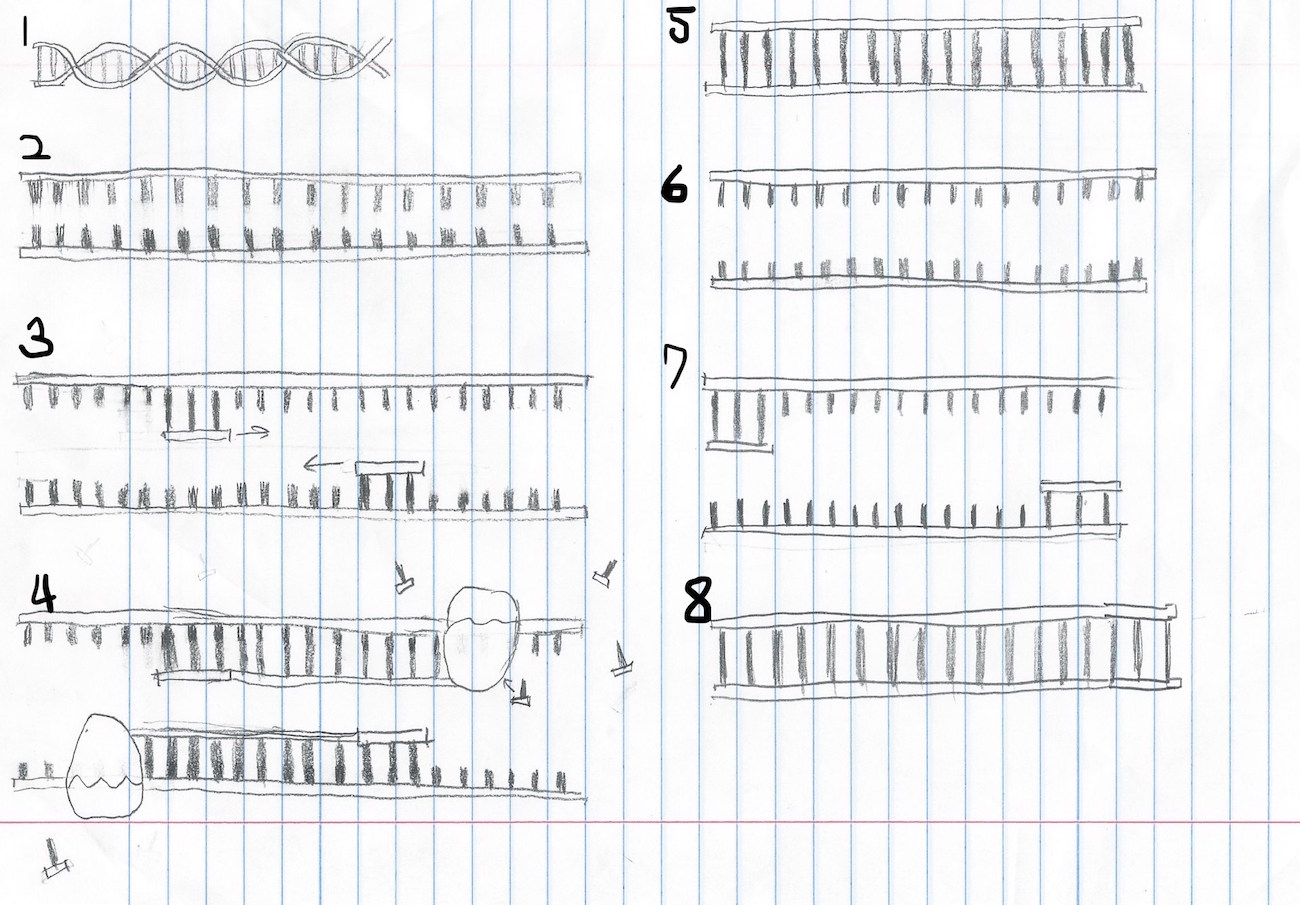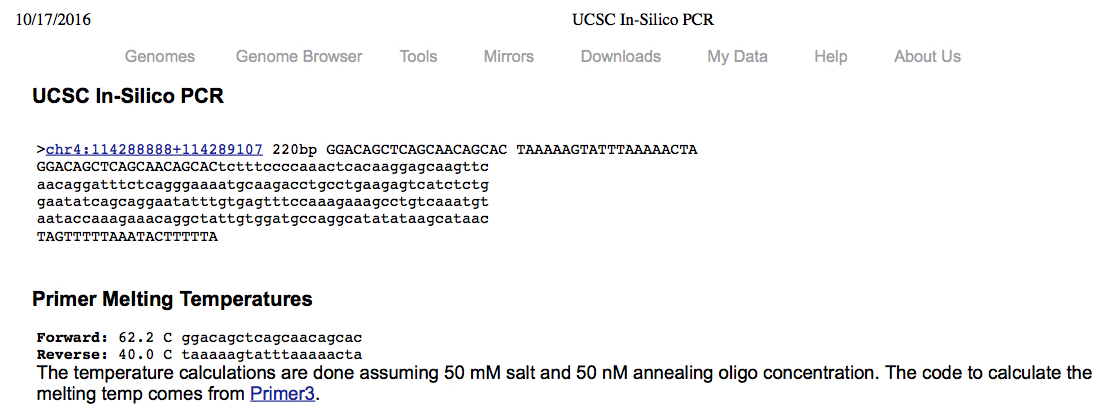BME100 f2016:Group15 W1030AM L4
| Home People Lab Write-Up 1 | Lab Write-Up 2 | Lab Write-Up 3 Lab Write-Up 4 | Lab Write-Up 5 | Lab Write-Up 6 Course Logistics For Instructors Photos Wiki Editing Help | |||||||||||||||||||||||||||||||||
|
OUR TEAM
LAB 4 WRITE-UPProtocolMaterials
OpenPCR program
INITIAL STEP: 95°C for 2 minutes NUMBER OF CYCLES: 25 Denature at 95°C for 30 seconds, Anneal at 57°C for 30 seconds, and Extend at 72°C for 30 seconds FINAL STEP: 72°C for 2 minutes FINAL HOLD: 4°C
Research and DevelopmentPCR - The Underlying Technology
In the initial step we first heat the Open PCR Machine and wait for three minutes until it heats up to 95°C which is very very hot. At 95°C the second step initiates for 30 seconds when our template DNA seperates from one helix strand to two single strands of DNA. The Open PCR Machine will then drop to 57°C for 30 seconds. At this specific time, the two strands of DNA will look for a way to attach together however becauese two different primers were added each type of primer will attach to either the top of the DNA or the Bottom of the DNA before the two strands can come together. Next the Machine will change to 72°C for 30 seconds. At this interval our DNA polymerase will immediately start to find our attached primers on the ends of the DNA strands and the polymerase will then take the excess nucleotides and begin attaching them to the primer until it forms a complete complimentary strand. Then to make sure that it has fully extended the DNA the machine will be left at 72°C for 30 seconds. After that it is cooled to 4°C in order for the DNA to recombine and for it to be at a proper temperature to be removed. The process can be replicated as many times as one wishes. DNA is made up of four types of molecules called nucleotides, which are adenine, thymine, cytosine and guanine. Adenine will pair up with Thynine. Likewise Thynine pairs with Adenine. Furthermore Cytosine will always pair with Guanine and Guanine will pair with Cytosine vice versa. Base pairing occurs during the Annealing step in which the primers which consist of nucleotides attatch to the seperated strands. Furthermore base pairing also occurs in the Extend step in which the different nucleotides floating in the solution attach with the primers and get paired with the original seperated DNA strands with help from the polymerase.
1. This picture is simply the initial state of the template DNA that still needs to be shortened. 2. The DNA was heated up, so the double helix unraveled and the ends separated. 3. The primers attached to the desired regions of the DNA on opposite ends. 4. DNA Polymerase attaches to the primers and takes the nucleotides floating around and attaches them onto the DNA 5. The process has created a very small amount of the desired strand and it must be continued. What is not shown is that the desired strand of DNA is not yet present until another cycle is done. 6. The solution is heated once again and the strands separate. 7. The primers attach once again as it is cooled down 8. The DNA Polymerase attached to the separate ends and replicated the DNA. This is when the desired strand of DNA is finally present, so steps 4-8 can be repeated as may times as needed.
SNP Information & Primer DesignBackground: About the Disease SNP SNP which stands for single nucleotide polymorphisms, is the variation in the genome of a single nucleotide, occur at specific positions. In simple words, it is the change in the letter in the nucleotide.For instance, SNP may change the nucleotide cytosine(C) with thymine(T) in the DNA building block. SNP may cause Mendelian disease like sickle cell anemia. SNP can cause complex diseases too, but it takes more than a single SNP to make that possible. SNPs in non-coding regions may affect mRNA structure besides leading to a higher risk of cancer. Meanwhile, SNPs in coding regions can affect the function of the amino acid in the protein and cause nonsense-point mutation in the sequence of DNA that results in premature stop codon. Primer Design and Testing The forward and reverse primers were found using the tools provided by the National Center for Biotechnology and the DNA base pairs were counted from the desired piece of DNA. There were 20 pieces of DNA in each primer and this resulted in a piece of DNA that was 220 base pairs long in total. The primers also came from opposite sides of the DNA and were all 5' to 3', so that the DNA would be able to replicate both ways, speeding up and increasing the amount of DNA that is workable. | |||||||||||||||||||||||||||||||||






